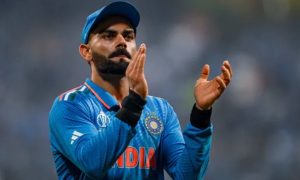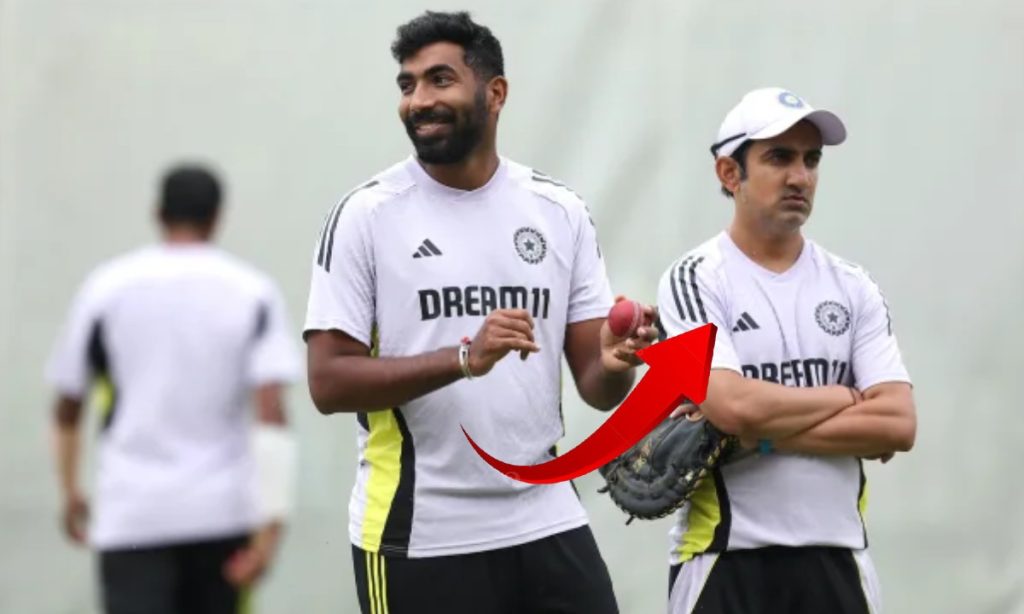Gautam Gambhir, a stalwart in Indian cricket known for his strategic mind both on and off the field, has recently unveiled what he considers to be the all-time greatest Indian XI. This selection not only reflects his personal experiences and biases but also honors the players who have significantly shaped the trajectory of Indian cricket. Notably, the absence of contemporary pace sensation Jasprit Bumrah from this list has raised eyebrows and ignited discussions among cricket aficionados worldwide. Let’s delve into Gambhir’s choices, examining each player’s contribution to the game and why they made the cut.
Here’s The Playing XI Picked By Gautam Gambhir
Gautam Gambhir
Gambhir’s inclusion in his own XI is not merely an act of self-selection but a recognition of his pivotal role in shaping innings. His partnership with Virender Sehwag was nothing short of legendary, providing India with some of the most memorable starts in ODI cricket history. Gambhir’s approach at the crease was methodical yet effective, often laying the groundwork for the middle order to capitalize. His contribution in the 2011 World Cup, especially in the final, underscores his importance to this lineup.
Virender Sehwag
Sehwag, with his fearless approach, was the perfect counterpart to Gambhir. His aggressive style not only put pressure on the opposition from the outset but also set a high benchmark for strike rates in cricket. Together, they formed one of the most explosive opening pairs, altering the dynamics of ODI cricket and giving India a significant advantage in many matches.
Rahul Dravid
Rahul Dravid, known as “The Wall,” was a natural fit at number three. His technique, patience, and ability to play long innings stabilized the middle order after the aggressive start by the openers. Dravid’s role was crucial in absorbing pressure and setting up platforms for the likes of Tendulkar and Kohli to take over. His inclusion is a nod to his invaluable contribution to India’s batting lineup over the years.
Sachin Tendulkar
Sachin Tendulkar’s presence in any all-time XI is non-negotiable. With a career spanning over two decades, Tendulkar’s versatility, longevity, and sheer talent made him the cornerstone of Indian cricket. His ability to adapt to different situations, whether it was anchoring an innings or accelerating when needed, cements his place. Tendulkar’s records speak for themselves, but it’s his impact on fans and the game that truly immortalizes him.

Virat Kohli
Virat Kohli’s inclusion reflects the era of dominance in Indian cricket where he has played a starring role. Known for his consistency, fitness, and aggressive captaincy, Kohli has redefined batting in the modern era. His ability to score runs at a phenomenal rate in all formats of the game, coupled with his leadership, makes him a vital cog in this legendary lineup.
Yuvraj Singh
Yuvraj Singh‘s selection is not just about his batting prowess but also his significant contributions with the ball and in the field. His performance in the 2011 World Cup, where he was named Player of the Tournament, showcases his ability to influence games in multiple ways. Yuvraj’s six sixes in an over in T20 cricket also highlight his capacity to change the game’s momentum single-handedly.
MS Dhoni
MS Dhoni, arguably one of India’s greatest captains, brings more than just his wicket-keeping skills to this XI. His calm under pressure, strategic acumen, and match-finishing abilities are legendary. Dhoni’s leadership led India to numerous international triumphs, including the 2011 World Cup, which adds an emotional and strategic depth to this team.
Anil Kumble
Anil Kumble’s selection reflects his status as one of the greatest spin bowlers India has ever produced. His ability to take wickets on any surface, combined with his leadership when he captained the team, makes him indispensable. Kumble’s record of 619 Test wickets is a testament to his skill and longevity.
Ravichandran Ashwin
Ravichandran Ashwin’s inclusion speaks to the evolution of spin bowling in India. His ability to adapt, innovate, and dominate in different conditions, especially in Test cricket, has been remarkable. Ashwin’s variety and wicket-taking ability complement Kumble, providing a balanced spin attack.
Irfan Pathan
Irfan Pathan, although his career had its peaks and troughs, is remembered for his early promise as a left-arm pacer and a capable batsman. His inclusion might surprise some, but his versatility and the impact he made early in his career, especially with the bat in the middle order, justify his spot.
Zaheer Khan
Zaheer Khan closes out Gambhir’s XI with his left-arm pace, swing, and death-over expertise. His role in pivotal matches, including the 2011 World Cup final, demonstrates his clutch performance. Zaheer was instrumental in shaping India’s pace bowling attack during his time, providing a critical balance to the team.
No Place For Jasprit Bumrah
The omission of Jasprit Bumrah might be contentious, Gambhir’s selection showcases a blend of eras, styles, and the strategic thought process behind team composition. This XI not only represents individual brilliance but also the collective strength that has made Indian cricket a force to be reckoned with on the global stage. The debate over Bumrah’s exclusion might continue, but it’s clear that Gambhir’s choices are steeped in a rich understanding of the game’s history and its players’ impact.

